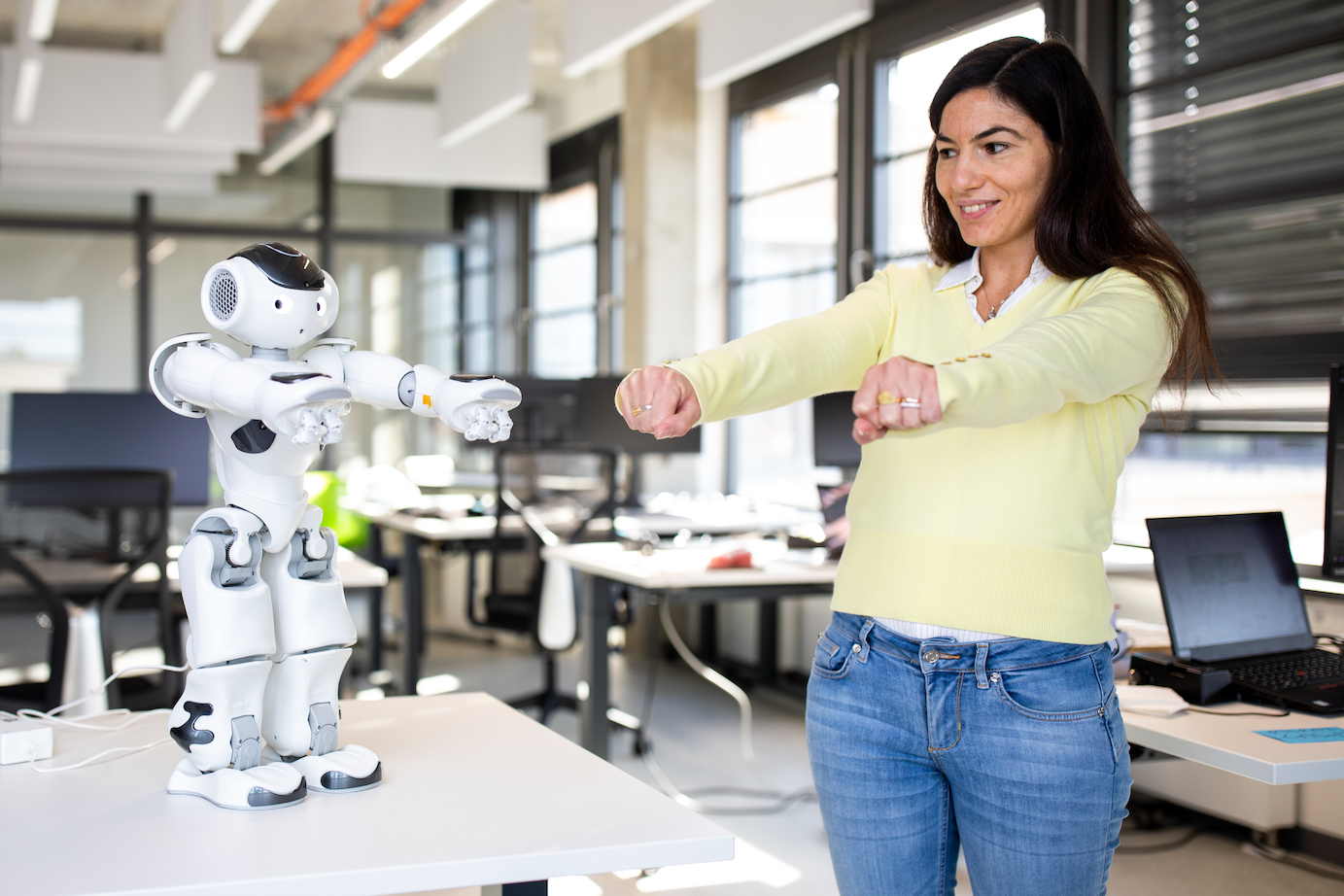Doris Pischedda on human-robot interactions, robot emotions, and her new Q-Team course
Why is it important to study interactions between humans and robots? Why do we want our robots to show us their emotions? We’ve asked our researcher Doris Pischedda about her work with robotic agents, and about the new elective course she is teaching at the Humboldt Universität through the bologna.lab.
Doris, you examine interactions between humans and robots. Why do we need to research that?
The use of robots in everyday life is increasing. For example, they are being employed as social companions for the elderly, or as assistive robots in health care. If we ask people to interact with artificial agents on a daily basis, the interaction should as be smooth as possible. I study social interaction between humans and robots to assess whether and how interactions of humans with artificial agents differ from interactions with other humans, and to evaluate which robot characteristics and social skills could make human-robot interactions more natural and successful.
Can you describe the sort of experiments you run?
I use neuroimaging techniques to record people’s brain activity while they perform tasks with humans or artificial agents. For example, in my last study I had participants verbally instruct three different task partners (a human, the Pepper robot, or a computer tower) to perform a task while lying in an fMRI scanner. We found that regions that are usually activated when people think about another person’s mental states were more active when our participants were interacting with another human as compared to a computer. However, with a more human-like partner, as our Pepper robot, the difference was less pronounced, suggesting that similar processes may be involved in human-human and human-robot interaction when instructing a task partner.
How are robots perceived by humans these days, and do you think the perception is changing?
Well, that’s what we are trying to assess in our studies using questionnaires developed in HRI research. In the past, robots were very rudimental, looked like machines, and were usually confined to labs. People could only form an impression of them from media coverage, comics, or Sci-Fi movies, which usually depicted them in a negative way. Nowadays, robots are more and more human-like, possess advanced skills, and are more available to people. People can find them when visiting a museum or at the airport while exploring the terminals, for example. Direct experience with robots improves people’s perception, especially if robots with sophisticated social skills are available.
What are the advantages of robot-human interaction?
It has many advantages, especially in situations where social interaction with other humans is difficult or not available. For example, during the pandemic, many people, especially the elderly, were isolated and could not interact with other humans; availability of social robots in this context would have alleviated loneliness and improved people’s well-being. Assistive robots could also enhance patient’s adherence to rehabilitation programs after clinical episodes, expand home care services for the elderly beyond the limited availability of trained professionals, increase frequency and duration of therapeutic interventions for people with impaired social skills (e.g., prolonged and continuous interaction between children with autism spectrum disorder and robots, instead of time-limited and infrequent interactions with therapists).
Why do we want robots that express emotions, and why should robots know how we feel?
Emotions enrich communication. An emotional response can help convey the exact meaning of what is said. The importance of emotions is evident if we think of people who have problems in recognizing emotions in others and in themselves, like people with autisms spectrum disorder. This category struggles in relating with others, and people find it hard to interact with them because their behavior is harder to predict. If robots could express emotions and understand what humans are feeling in a particular moment, interacting with them would be easier, more predictable, and therefore more comfortable and effective.
How do you think your project relates to SCIoI’s mission?
SCIoI aims to discover principles of intelligence that can be used to design intelligent machines. In line with SCIoI’s mission, my project looks at which behavioral features or dimensions of social intelligence could be implemented in a robot to make it appear intelligent to humans.
And one last question: you were selected to teach a Q-Team at HU in the summer semester 2022. Can you tell us more about this?
Sure! Q-Teams are special elective courses offered by the bologna.lab at HU. These are research-based learning projects led by doctoral students or postdocs. This means that the students can actively take part in an ongoing research project in a field of interest to them. They develop and implement a research plan under the supervision of the project leader, take ownership of their work and, at the same time, learn from their experience (about the topic, the method, and the process). Q-Teams are a great opportunity for students who can gain hands-on research experience by supporting a running research project.





